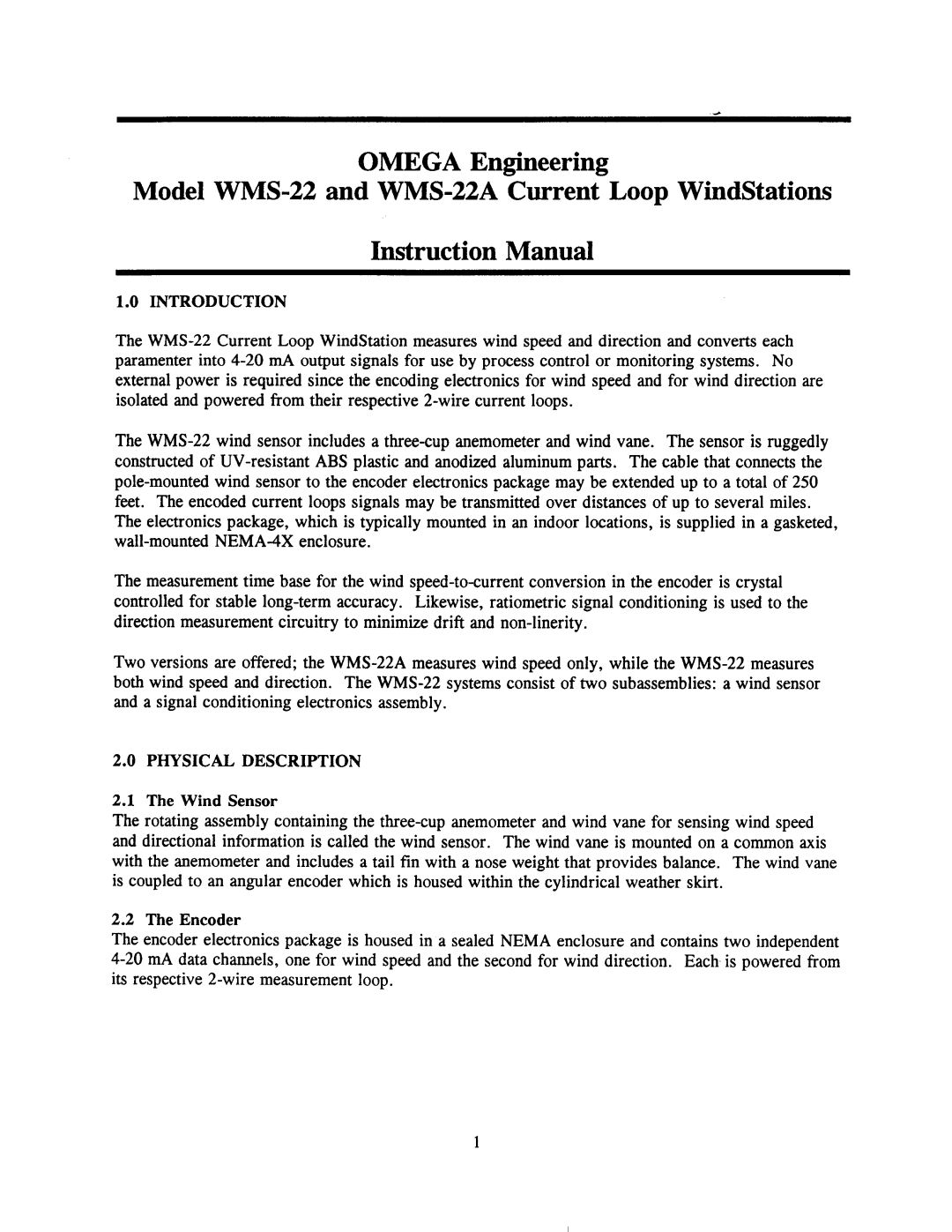OMEGA Engineering
Model WMS-22 and WMS-22A Current Loop WindStations
Instruction Manual
1.0 INTRODUCTION
The WMS-22 Current Loop WindStation measures wind speed and direction and converts each paramenter into 4-20 mA output signals for use by process control or monitoring systems. No external power is required since the encoding electronics for wind speed and for wind direction are isolated and powered from their respective 2-wire current loops.
The WMS-22 wind sensor includes a three-cup anemometer and wind vane. The sensor is ruggedly constructed of UV-resistant ABS plastic and anodized aluminum parts. The cable that connects the pole-mounted wind sensor to the encoder electronics package may be extended up to a total of 250 feet. The encoded current loops signals may be transmitted over distances of up to several miles.
The electronics package, which is typically mounted in an indoor locations, is supplied in a gasketed, wall-mounted NEMA-4X enclosure.
The measurement time base for the wind speed-to-current conversion in the encoder is crystal controlled for stable long-term accuracy. Likewise, ratiometric signal conditioning is used to the direction measurement circuitry to minimize drift and non-linerity.
Two versions are offered; the WMS-22A measures wind speed only, while the WMS-22 measures both wind speed and direction. The WMS-22 systems consist of two subassemblies: a wind sensor and a signal conditioning electronics assembly.
2.0PHYSICAL DESCRIPTION
2.1The Wind Sensor
The rotating assembly containing the three-cup anemometer and wind vane for sensing wind speed and directional information is called the wind sensor. The wind vane is mounted on a common axis with the anemometer and includes a tail fin with a nose weight that provides balance. The wind vane is coupled to an angular encoder which is housed within the cylindrical weather skirt.
2.2 The Encoder
The encoder electronics package is housed in a sealed NEMA enclosure and contains two independent 4-20 mA data channels, one for wind speed and the second for wind direction. Each- is powered from its respective 2-wire measurement loop.

